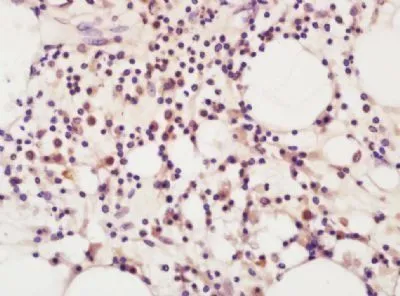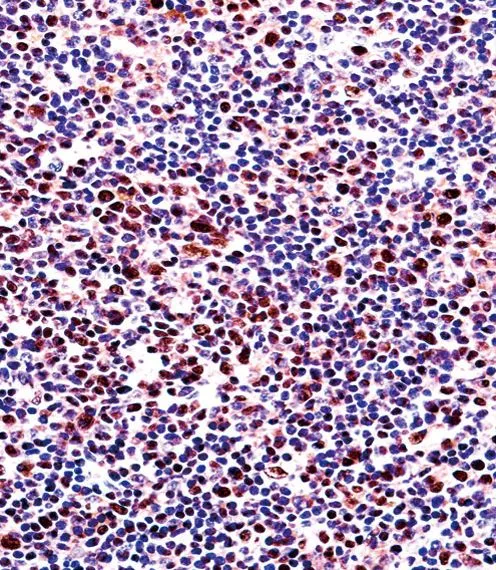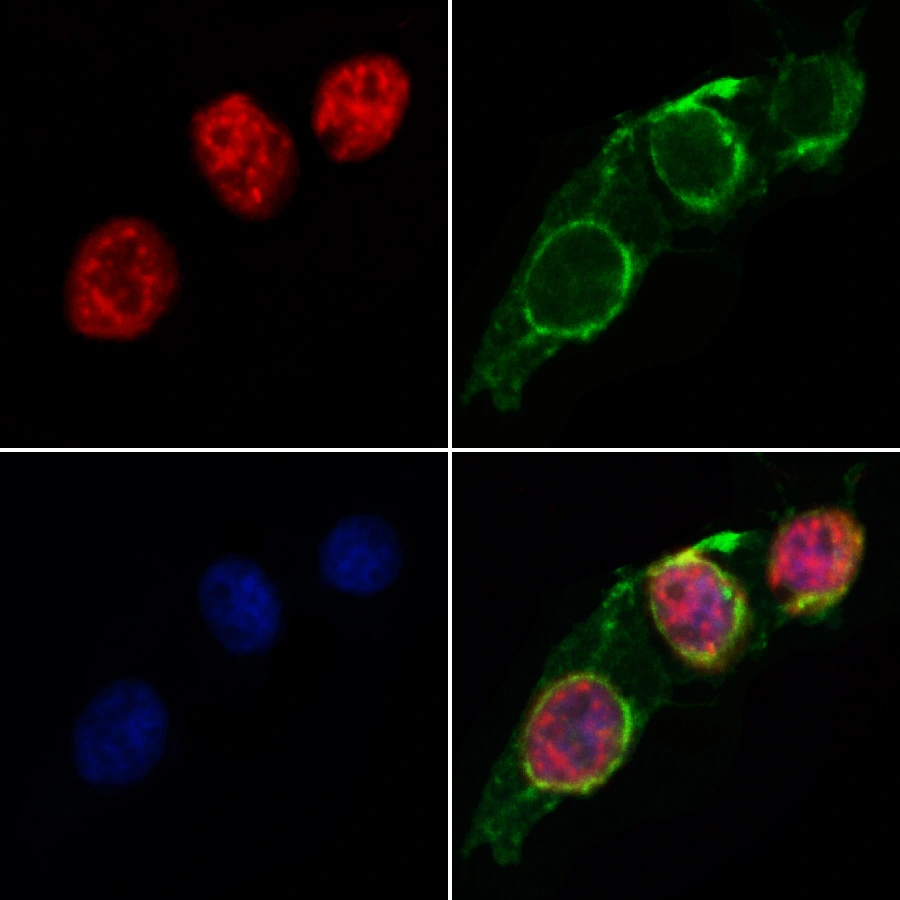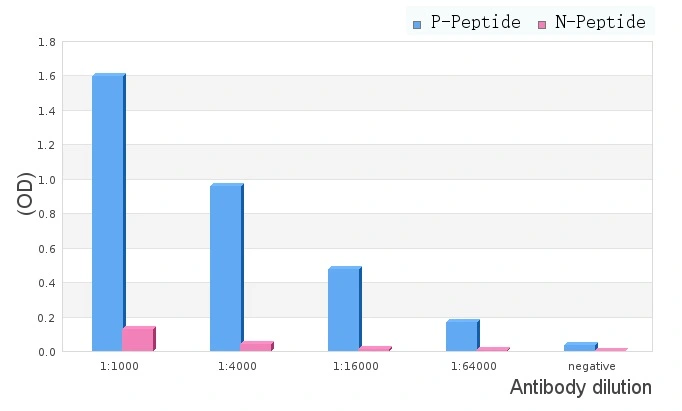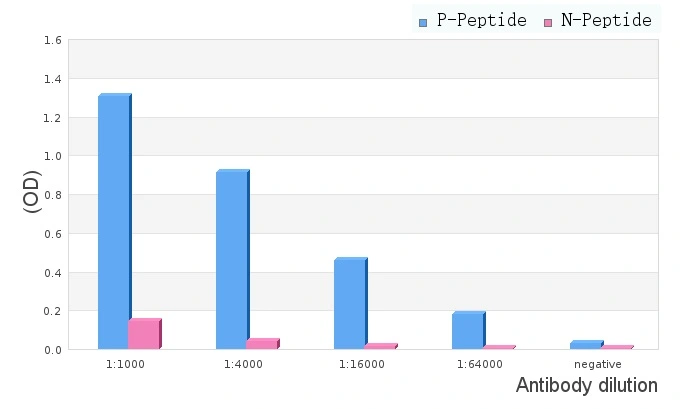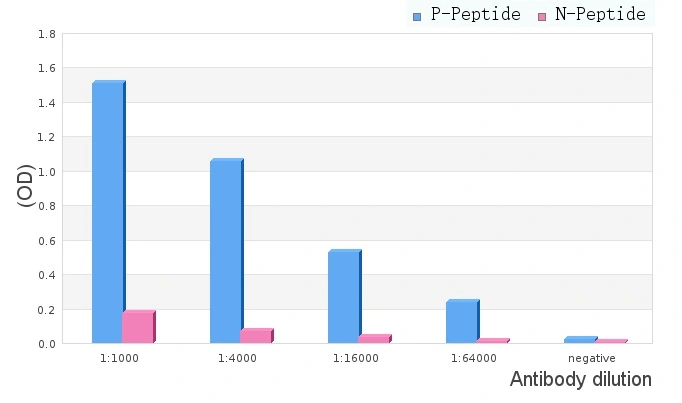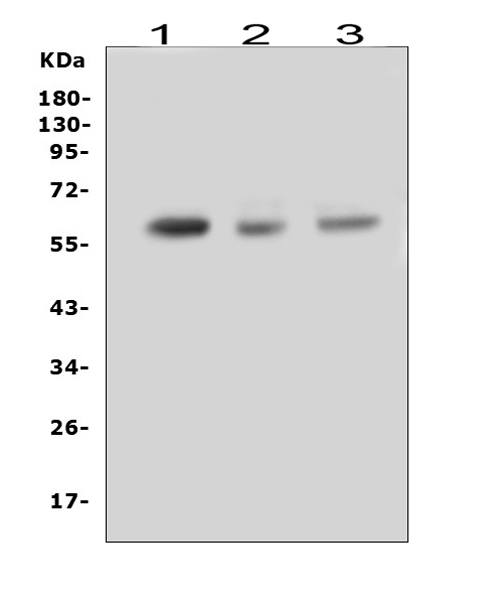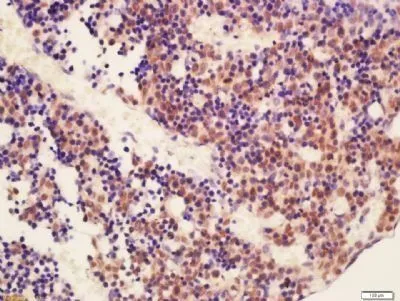
IHC-P analysis of mouse embryo tissue using GTX37759 RUNX2 antibody.
RUNX2 antibody
GTX37759
ApplicationsImmunoHistoChemistry, ImmunoHistoChemistry Paraffin
Product group Antibodies
TargetRUNX2
Overview
- SupplierGeneTex
- Product NameRUNX2 antibody
- Delivery Days Customer9
- Application Supplier NoteIHC-P: 1:400-800. *Optimal dilutions/concentrations should be determined by the researcher.Not tested in other applications.
- ApplicationsImmunoHistoChemistry, ImmunoHistoChemistry Paraffin
- CertificationResearch Use Only
- ClonalityPolyclonal
- Concentration0.5 mg/ml
- ConjugateUnconjugated
- Gene ID860
- Target nameRUNX2
- Target descriptionRUNX family transcription factor 2
- Target synonymsacute myeloid leukemia 3 protein; AML3; CBFA1; CBF-alpha-1; CCD; CCD1; CLCD; core-binding factor, runt domain, alpha subunit 1; oncogene AML-3; OSF2; OSF-2; osteoblast-specific transcription factor 2; PEA2aA; PEA2-alpha A; PEBP2aA; PEBP2-alpha A; polyomavirus enhancer-binding protein 2 alpha A subunit; runt related transcription factor 2; runt-related transcription factor 2; SL3/AKV core-binding factor alpha A subunit; SL3-3 enhancer factor 1 alpha A subunit
- HostRabbit
- IsotypeIgG
- Protein IDQ13950
- Protein NameRunt-related transcription factor 2
- Scientific DescriptionThis gene is a member of the RUNX family of transcription factors and encodes a nuclear protein with an Runt DNA-binding domain. This protein is essential for osteoblastic differentiation and skeletal morphogenesis and acts as a scaffold for nucleic acids and regulatory factors involved in skeletal gene expression. The protein can bind DNA both as a monomer or, with more affinity, as a subunit of a heterodimeric complex. Two regions of potential trinucleotide repeat expansions are present in the N-terminal region of the encoded protein, and these and other mutations in this gene have been associated with the bone development disorder cleidocranial dysplasia (CCD). Transcript variants that encode different protein isoforms result from the use of alternate promoters as well as alternate splicing. [provided by RefSeq, Jul 2016]
- Storage Instruction-20°C or -80°C,2°C to 8°C
- UNSPSC12352203

